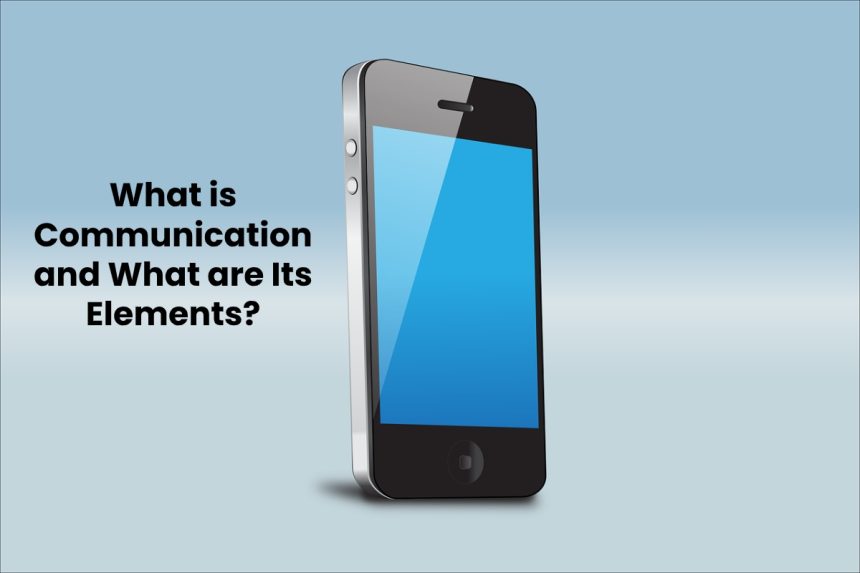What is Communication?
Communication is a process that allows us to exchange information and establish a type of social relationship with those around us. Therefore, it is a dynamic and systematic act that makes people understand each other and establish opinions or positions as the case may be. Two or more people participate in this process, that is, a sender and a receiver capable of sending, decoding, and interpreting the codes exchanged between them.
- The communicative act is an essential process through which people can share information, opinions, feelings, experiences, and knowledge.
- Therefore, it is a vital action that allows us to satisfy the human need to communicate using either oral language, written language, gestural language, or sounds.
- Currently, there is development in various communication channels thanks to technological and scientific advances that even help those who have some type of visual, hearing, or oral disability, so that they can communicate with others.
- In this sense, the importance of communication lies in establishing human relationships that allow people to fulfill the objective of transmitting information or feelings, achieving understanding, generating action, among others.
- Hence, various channels, such as the media and social networks, allow us to be in constant contact with others.
It is important to emphasize that communication between the interlocutors must be developed coherently. And respecting the good speaker’s rules and a good listener. In this way, assertive and effective communication can be achieved.

Elements of Communication
The communication process involves various elements, which are necessary both to emit a message and to decode and understand it in order to offer a response or action.
Therefore, we know that communication has developed correctly when the receiver interprets the message and offers a response to the sender, and so on. In this sense, communication is also a process of information feedback.
Transmitter
The person who has the initiative to share particular information is called the sender and starts the communication by emitting a message through certain communicative signs and encoding the receiver’s message.
Receiver
The person who receives and interprets a message, previously sent by a sender, is called the receiver. That is, it is he who is in charge of decoding the signs of the received message. Once such information has been interpreted, the receiver can respond. And, in this way, take the place of the sender, generating a communicative action.
Code
Code is an essential element in the communication process since it is about the signs used to transmit a message. The code can be verbal (linguistic codes) or non-verbal.
It should be noted that the participants in the communication act (sender and receiver) share and use the same codes to be able to communicate efficiently and effectively, thus avoiding the loss of information or the inability to interpret a message correctly.
Message
It refers to the content transmitted, and that can be information, opinion, feeling, or idea. The messages are made up of symbols, linguistic codes, images, sounds, or keys recognized by both the sender and the receiver.
Check Out: Sms write for us, Guest Post, And Contribute, Advertise with us, Submit Post
Communication channel
It refers to the medium through which the message is sent between the sender and the receiver. For example, air, mobile phone, landline, email, among others. These media can include both visual and audio messages.
Context
It is the space or situation in which communication takes place. In other words, the specific circumstances in which the communication act takes place are taken into account. And may or may not negatively affect the sending or receiving of messages between the sender and the receiver.
Noise
During the communicative act, noises or physical alterations external to the communicative act may appear that affect or distort the message that is sent. In this sense, noise can affect communication development, so it is vital to recognize its origin and avoid or reduce it as much as possible.
Types of Communication
Different types of [communication] can be mentioned depending on the information shared. The number of participants, and the channels used if it occurs personally or remotely.
Verbal Communication
It is when the use of the spoken or written word is between two or more interlocutors to transmit information, opinion, or feeling.
This type of communication is unique and unique to human beings. In various cases, verbal communication can be supplemented by non-verbal communication.
Oral communication
Makes use of spoken words or loud sounds such as laughter or crying. Likewise, it varies from one social group to another, depending on the language spoken. Therefore, not all of us share the same linguistic signs.
Examples: A conversation between friends or a cry of pain from a blow.
Written communication
It is done through written codes, and the response or action times to messages are slightly slower than in [oral communication]. [Written communication] has been developed throughout the history of a human being. Therefore it is continuously changing, especially with the use of new technologies.
Example: alphabets, hieroglyphs, letters, chats, among others.
Non-verbal communication
It is one that does not make use of linguistic signs. Therefore it is expressed through body language, postures, facial expressions, and looks. That is, it uses the senses (hearing, smell, sight, touch, and taste ).
Sometimes this type of [communication] can arise unconsciously depending on the situation. It can also be confusing or ambiguous, as the message may not be clear to the recipient. Depending on how the sender expresses herself.
On the other hand, the use of non-verbal communication can also be a complement to [[verbal communication] to complement the message to be sent to the receiver.
It is a type of communication that is older than [verbal communication]. Since language emerged sometime later as the human being developed his [communication] skills.
Helpful Resource: Knowaboutanything

